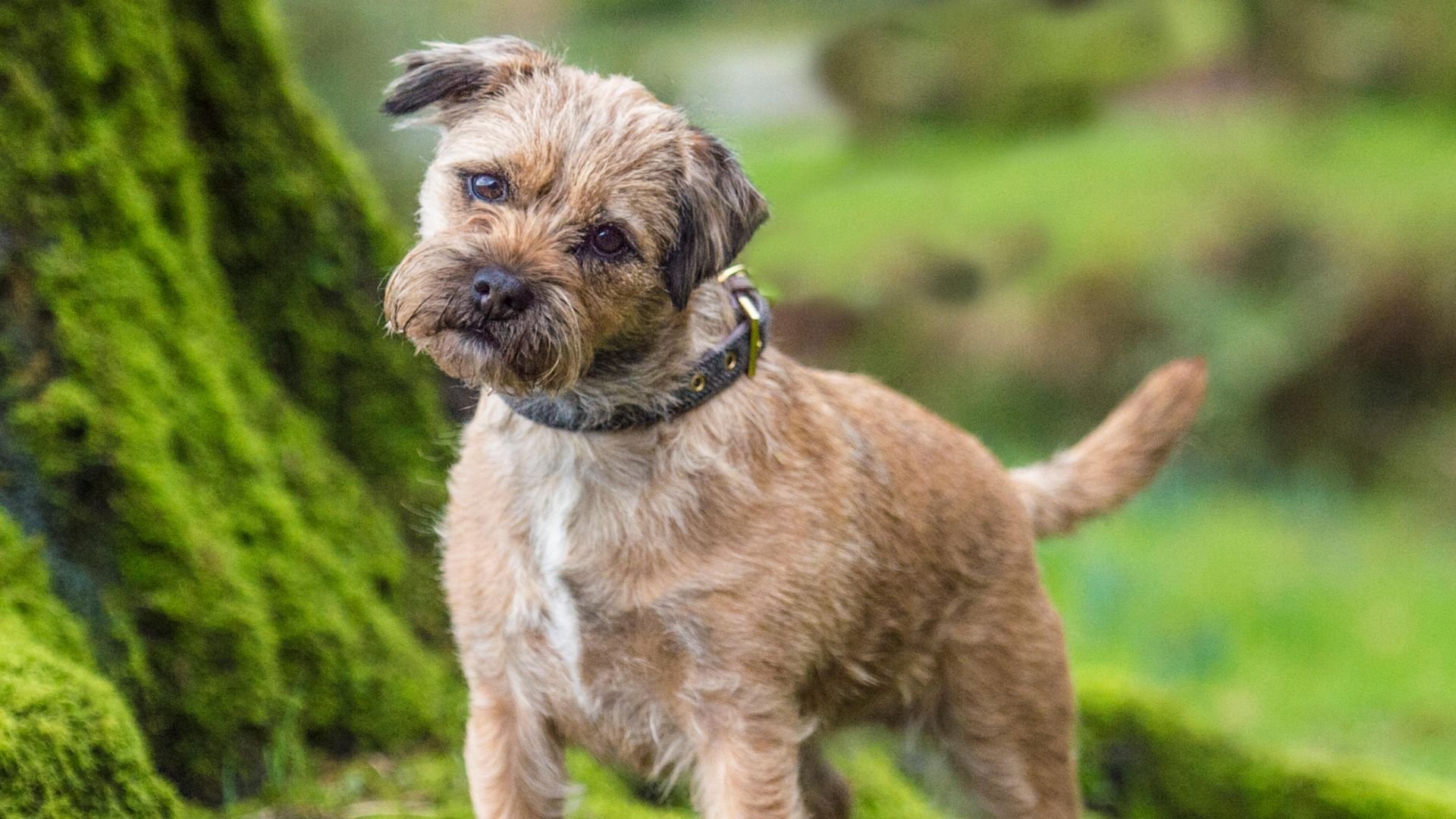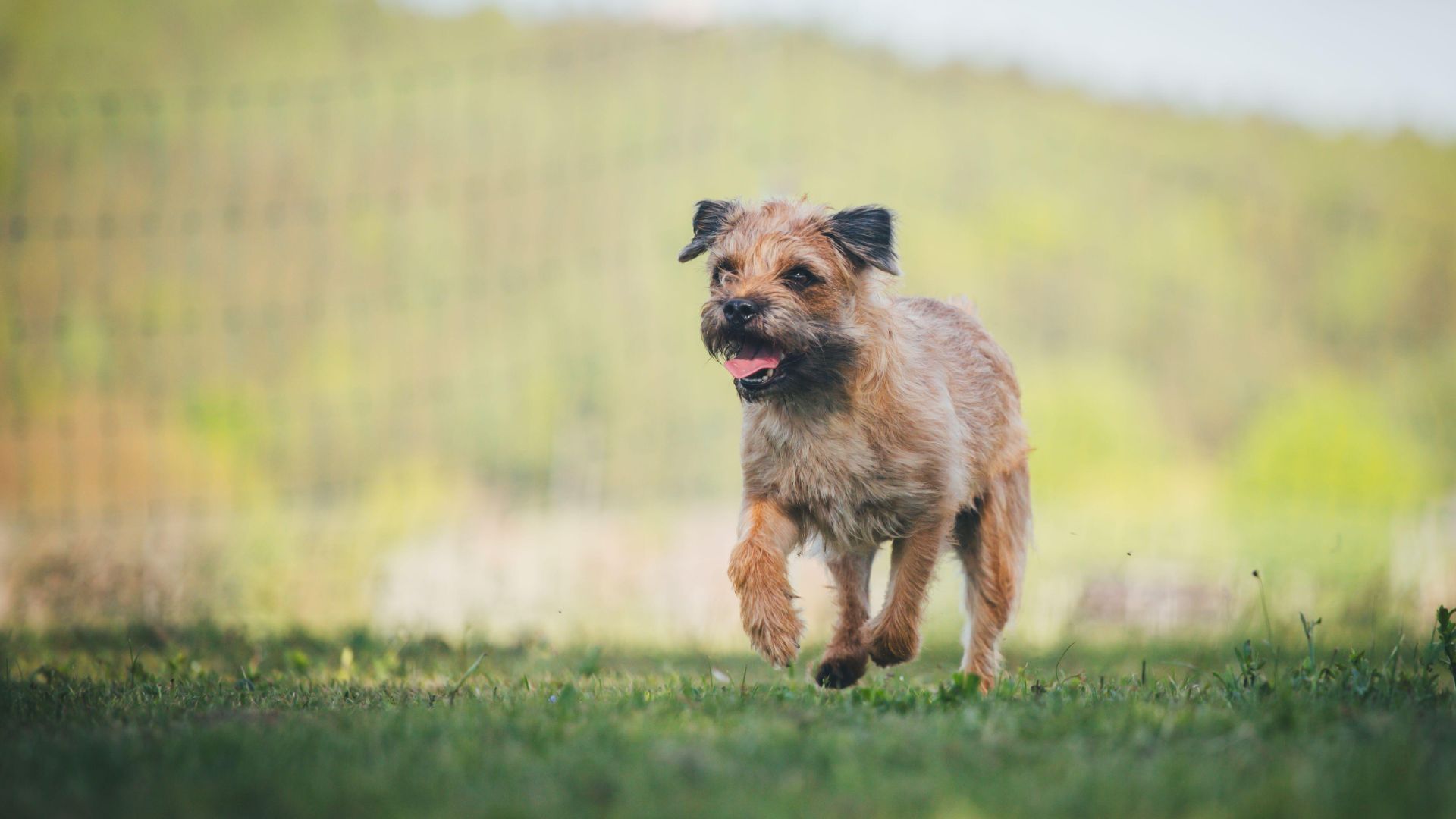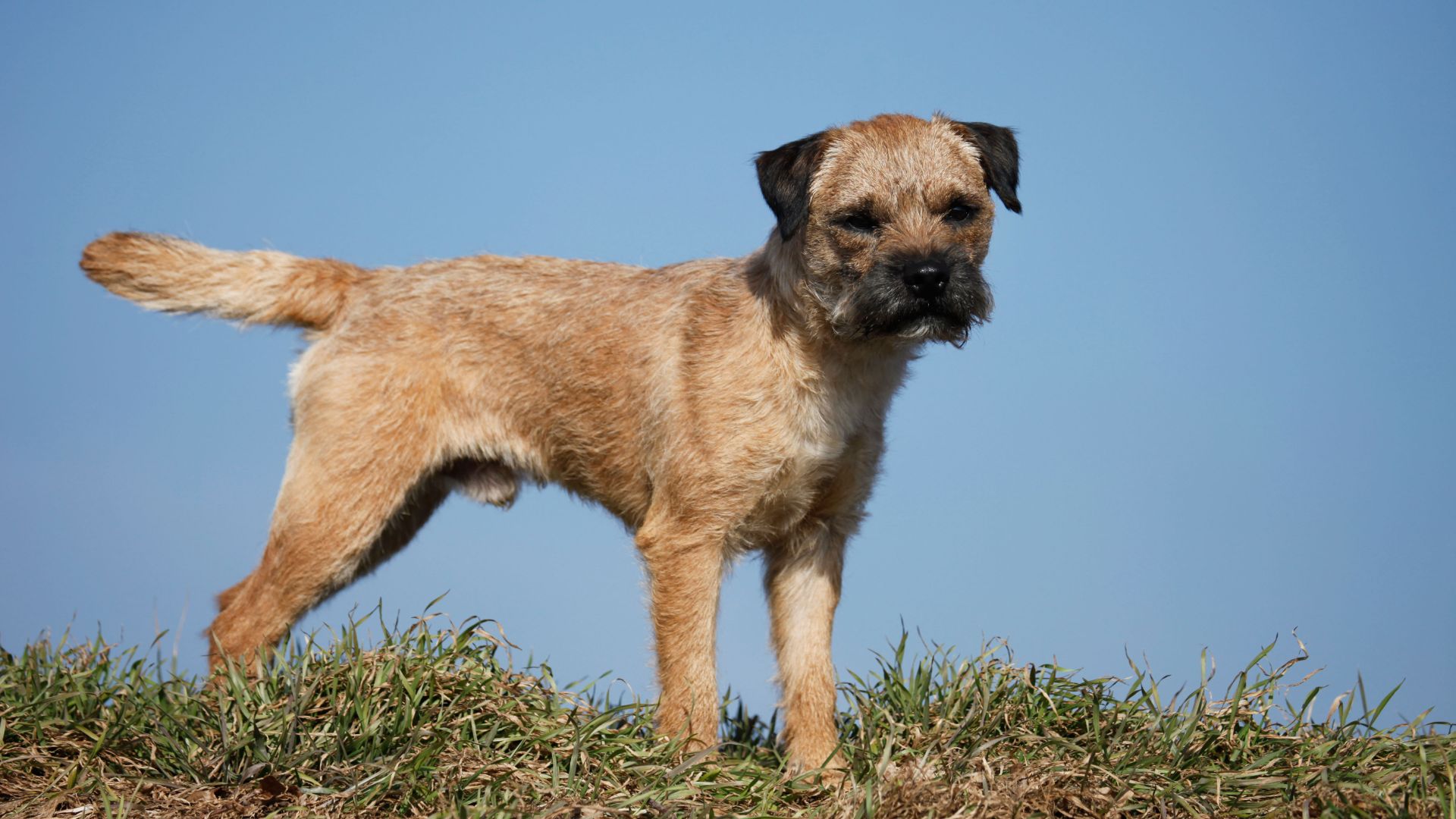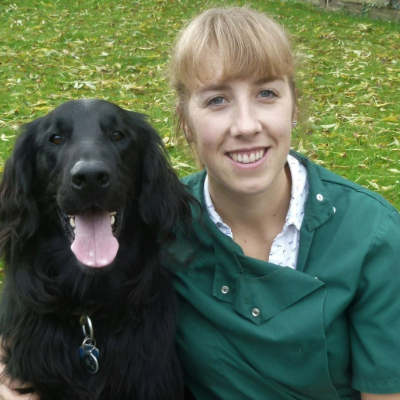Border Terriers might be small but their personality packs a punch
There’s a reason the plucky Border Terrier is such a popular family companion


Life expectancy: 12–15 years
Size: 12–15 inches
Coat: short
Temperament: affectionate, happy, plucky, energetic, fun-loving
Exercise needs: one hour a day
Origin: United Kingdom
Border Terriers get their name from the area in which they originated – the borders of Northumberland (in England) and Scotland in the UK, as was the Border Collie. They were bred to be working dogs, famously used alongside foxhounds by the Border Hunt in Northumberland. Nowadays, Border Terriers are popular family dogs, and their small stature and affectionate nature mean they’ve adapted well to life in towns and cities as well as in the countryside.
They’re easily recognisable from other terriers by their unique, “otter-shaped” head and their wiry coats are easy to look after. However, they do love exploring outside – particularly if it involves digging – and they’re often energetic with a high prey drive thanks to their hunting heritage.
So what should you consider before adding a Border Terrier to your family? Read on to find out more about this plucky breed, with expert advice from vet Dr Rebecca MacMillan.
Are Border Terriers hypoallergenic?
Many potential dog owners seek breeds that are hypoallergenic, which means they’re more suitable for people who suffer from dog allergies. Hypoallergenic dogs often shed less and produce less dander, which are common irritants to allergy-sufferers.
Dr MacMillan explains, “No dog breed is truly allergen-free, but the Border Terrier is lower-shedding than many other breeds.”
Although this makes the breed a fairly popular option for allergy-sufferers, Dr MacMillan warns, “Their double coat has fluffier hairs under their wiry top layer, which may still trigger sensitive allergy sufferers.”
Are Border Terriers good with kids?
Although Border Terriers are often energetic, they are known for being even-tempered and easy-going, making them a good choice for families with children – as long as they’re given the exercise and training they require.
Get the best advice, tips and top tech for your beloved Pets
Dr MacMillan confirms, “With the right early socialisation and training, Border Terriers can make great family pets. However, they are energetic and enjoy rough play, so they may not be ideal for very young children.”

Are Border Terriers easy to train?
Border Terriers are highly intelligent and very biddable in nature, which makes them one of the easier terrier breeds to train.
“Border Terriers are smart and eager to please,” agrees Dr MacMillan, “but their high energy levels can affect their concentration sometimes.”
Their hunting instincts can prove problematic to some owners if they don’t keep on top of training. Dr MacMillan advises: “Make sure your dog is receiving enough daily exercise, and keep training sessions short and positive to keep them engaged.”
Positive, reward-based training leads to a happy Border Terrier, and early socialization will help encourage a confident, relaxed pet.
Are Border Terriers good with cats?
While lots of owners report their Border Terriers getting on well with cats, early socialization is key to compatibility. And for some Border Terriers, their strong hunting instincts mean they may well be inclined to chase cats and other small pets, which would make them a less natural match than some of other cat-friendly dog breeds.
“Like many terriers, this dog has a high prey drive and may not be great around cats. Border Terriers are inclined to chase and bark at cats and other small furries,” explains Dr MacMillan. “There are always exceptions, however, and early positive introductions and socializations between your puppy and feline friend may help to prevent this,” she adds.

Are Border Terriers affectionate?
Border Terriers may be small, but they have big personalities. They love being part of a family and are very affectionate because of this. They’re happiest when they’re being included in all aspects of family life – whether that’s snuggled up on the sofa or exploring the great outdoors.
However, if their exercise needs aren’t met, they can become bored and destructive in the home, so ensure they get plenty of walks and lots of playtime.
Wisdom Panel Breed Discovery DNA Kit | Amazon
Not sure exactly what breed your dog is? This kit screens for 365+ breeds – because knowing every detail about your dog helps you understand how best to care for them.
Border Terrier common health problems
As with many pedigree dogs, Border Terriers are prone to certain health complaints, including hereditary joint disorders such as hip dysplasia and luxating patella.
“Shaking puppy syndrome” – or spongiform leucoencephalomyelopathy (SLEM) – is a hereditary neurological disease that can affect Border Terriers.
“This affects puppies from a very young age,” explains Dr MacMillan. “As affected puppies start to walk, they show uncontrollable shaking of their hind limbs, which will go on to affect the entire body.
“Breeders can help guard against this by performing DNA testing on their dogs before mating them,” she adds, so make sure to ask your breeder what health and DNA testing they’ve had done on the parents before you purchase a puppy.
Canine epileptoid cramping syndrome (CECS) is another disease that can be seen in some pedigree Border Terriers. It causes symptoms such as “tremors, muscle spasms, and seizures”, says Dr MacMillan.
“This condition is also known as ‘Spike’s disease’ and it usually starts at around two to six years of age. Surveys in the UK, Germany, and the USA suggest that five to 15% of Border Terriers are affected. More research is needed into this condition, and there is currently no genetic testing available.”
Should I buy a Border Terrier?
If you’re after an energetic, playful and affectionate dog, a Border Terrier could be a great fit for you. They form strong bonds with their families and are known for being great with children, and they respond well to positive, reward-based training.
While they were initially bred as hunting dogs, they adapt well to life in towns and cities, provided they get enough exercise and mental stimulation. That said, they can have a high prey drive and be tempted to chase or bark at other small animals, so early training and socialization is key to an obedient and happy dog.
Border Terriers can be a good choice for a first-time owner thanks to their easy-going, intelligent nature, as long as you’re able to commit enough time to their training and exercise needs.
Written by experts, this guide gives you all the information you will need to provide your Border Terrier with the care and training that will enable him to lead a happy and fulfilling life.
Read next: British dog breeds

Rebecca is a veterinary surgeon who graduated in 2009 from the Royal Veterinary College in London. She has a wealth of experience in first opinion small animal practice, having done a mixture of day-to-day routine work, on-call emergency duties and managerial roles over the years. Rebecca enjoys medicine in particular and she is proud to have recently achieved a BSAVA postgraduate certificate in small animal medicine (with commendation).
She writes on various feline and canine topics, including behavior, nutrition, and health. Outside of work and writing she enjoys walking her own dog, spending time with her young family and baking!
Edited by Georgia Guerin.
This feature was last updated in June 2025 by Victoria Jones.

Victoria Jones is a freelance writer at PetsRadar. She has a decade of experience working on equestrian and countryside magazines – including on PetsRadar's sister title Horse & Hound for five years. She has done a variety of different jobs over the years, including sub-editing, writing, video editing and marketing.
Victoria is currently dog mum to Maple, a six-year-old German Shorthaired Pointer with endless energy. She also helps to look after her husband's marine fish tank, with her favourite inhabitants being the two clown fish, Michel and Francois.
She has previously owned cats and horses as well – at one point having a menagerie of two dogs, two cats and two horses, which kept her very busy indeed.


